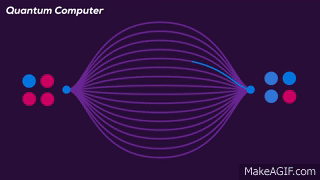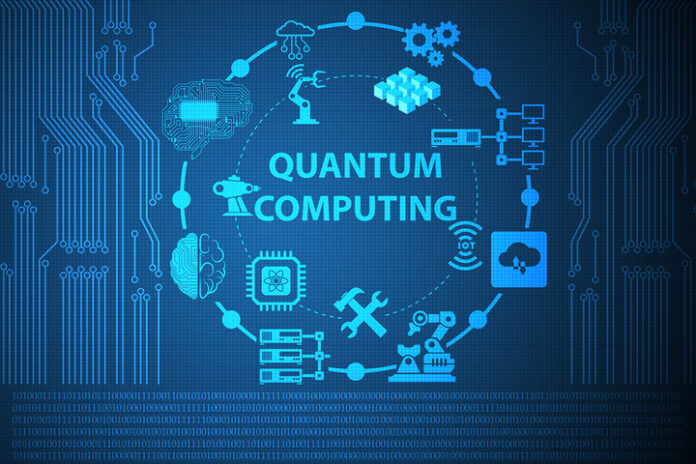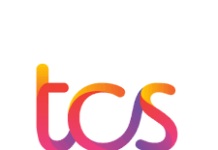INTRODUCTION : WHY FOR QUANTUM COMPUTING?
• WHY FOR QUANTUM COMPUTING? : A Quantum Computer is a machine that performs calculations. Based on the laws of quantum mechanics, which is the behavior of particles at the sub-atomic level.
• Quantum theory is the theoretical basis of modern physics that explains the nature and behavior of matter. Energy on the atomic and subatomic level. The nature and behavior of matter. Energy at level sometimes referred to as quantum physics and quantum mechanics.
• Qubits

HISTORY : WHY FOR QUANTUM COMPUTING?
1980 – Physicist Paul Benioff proposed a quantum mechanical model of the Turing Machine.
1982 – Richard Feynman proposed the idea of creating machines. Based on the laws of quantum mechanics instead of the laws of classical physics.
1985 – David Deutsch developed the quantum turing machine. Showing that quantum circuits are universal.
1994 – Peter Shor came up with a quantum algorithm. To factor very large numbers in polynomial time.
1997 – Lov Grover develops a quantum search algorithm. Quantum search algorithm with o(√n) complexity.

WHY QUANTUM COMPUTERS?
• Moore’s Law slowing down in 2020, it flattened out.
• Transistor cannot made smaller due to the laws of Quantum Mechanics starts to takeover, i.e. Quantum Tunneling.
• Post Silicon Era.
DATA REPRESENTATION – QUBIT
• A bit of data represented a single atom. Atom that in one of two states denoted by |0> and |1>. A single bit of this form known as a qubit.
• A physical implementation of a qubit could use the two energy levels of an atom. An excited state representing |1> and a ground state representing |0>.

DATA REPRESENTATION – SUPERPOSITION AND ENTANGLEMENT
• Superposition refers to the Quantum phenomenon where a Quantum system can exist. In multiple states or places at the exact same time.
A qubit in superposition in both of the states |1> and |0 at the same time
• Quantum entanglement a physical phenomenon that occurs when pairs or groups of particles generated, interact. Share spatial proximity in ways such that the quantum state. Each particle cannot described independently of the state of the others. Even when the particles separated a large distance.
Quantum Computing Vs Conventional Computing
• In Conventional Computing (CC), bits used which either on or off in a given time. But in Quantum Computing (QC), Qubits used which follows the phenomenon of superposition and entanglement. Where it is possible to be in more than one state at time.
• Storage is based on bits in CC while in QC, it is based on Quantum Bits, i.e. Qubits.
• The circuit behavior is govern by classical physics in CC while it is govern by quantum physics in QC.
• CMOS transistors are the basic building blocks of CC while Superconducting Quantum Interference. Devices of Quantum Transistors are the basic building block of QC.
• Processing done CPU which consists of ALU, registers and control unit in CC but in QC. rocessing done by QPU which consists of a number of interconnected Qubits.
Progress In Quantum Computing
• IBM has an initiative called IBM Q. Since 2016, IBM has provided access to cloud based quantum hardware. In Jan 2019, IBM unveiled the IBM Q System One Commercial QC.
• In February 2019, Microsoft Quantum Network. In May 2019, Microsoft to open source its Quantum Development Kit, including a Q Sharp Quantum Computing programming language.
• March 2018, Alibaba launched their Superconducting Quantum Computing Cloud.
• Google is also working on quantum hardware and software. In June 2019, the power of Google’s quantum processors is increasing at a doubly exponential rate.
• In November 2019, Google has made a major claim in quantum supremacy. With the new google quantum computer using the sycamore processor (53-qubit). It produces a sequence of random generated streams in 200s while it estimated to take 10,000 years. With a current fastest upercomputer to simulate the same result.
Click Here To Visit Our Website





